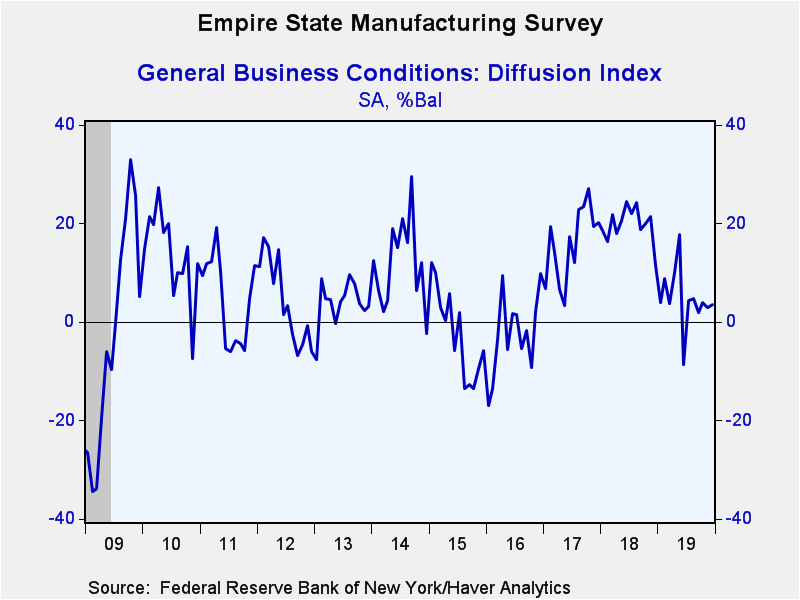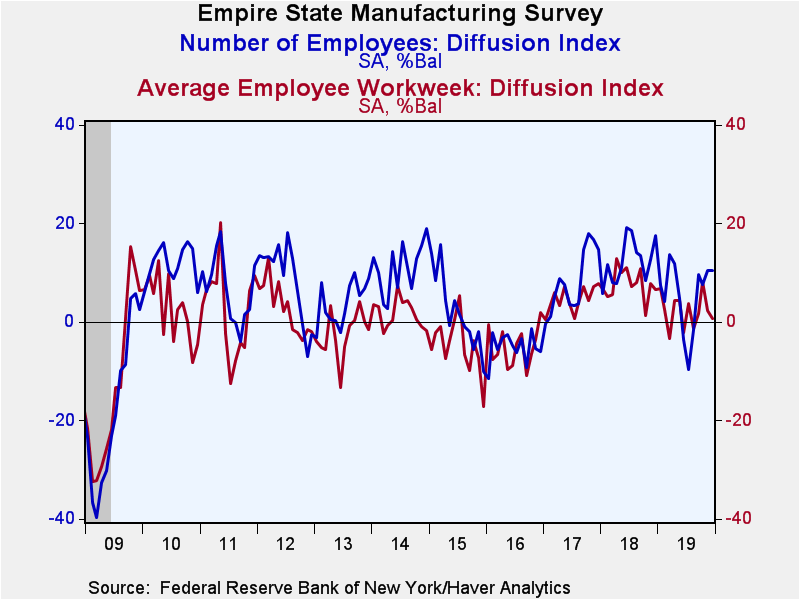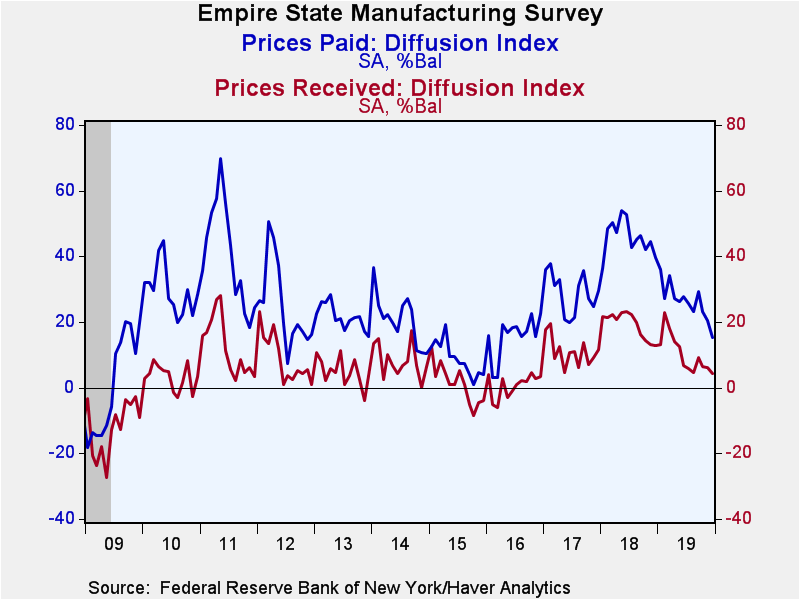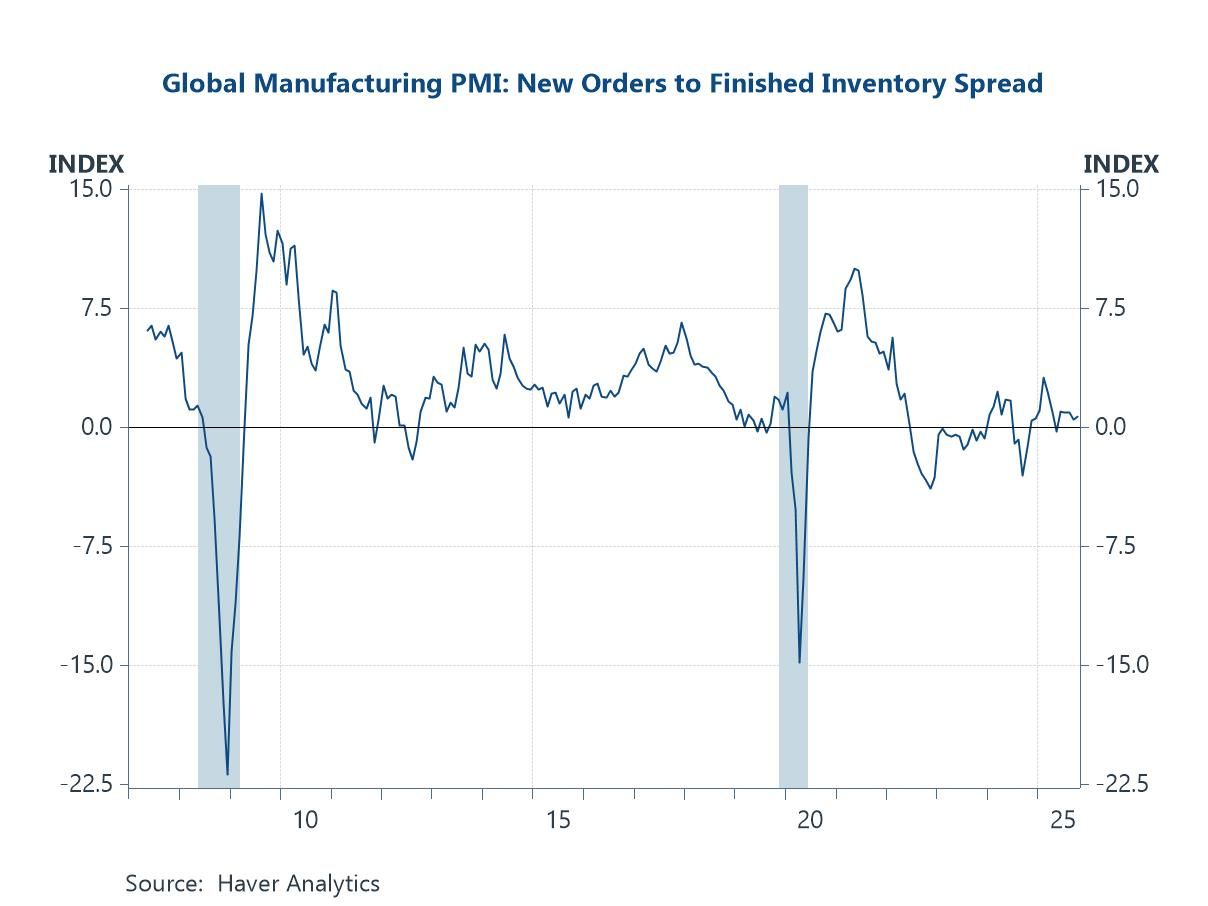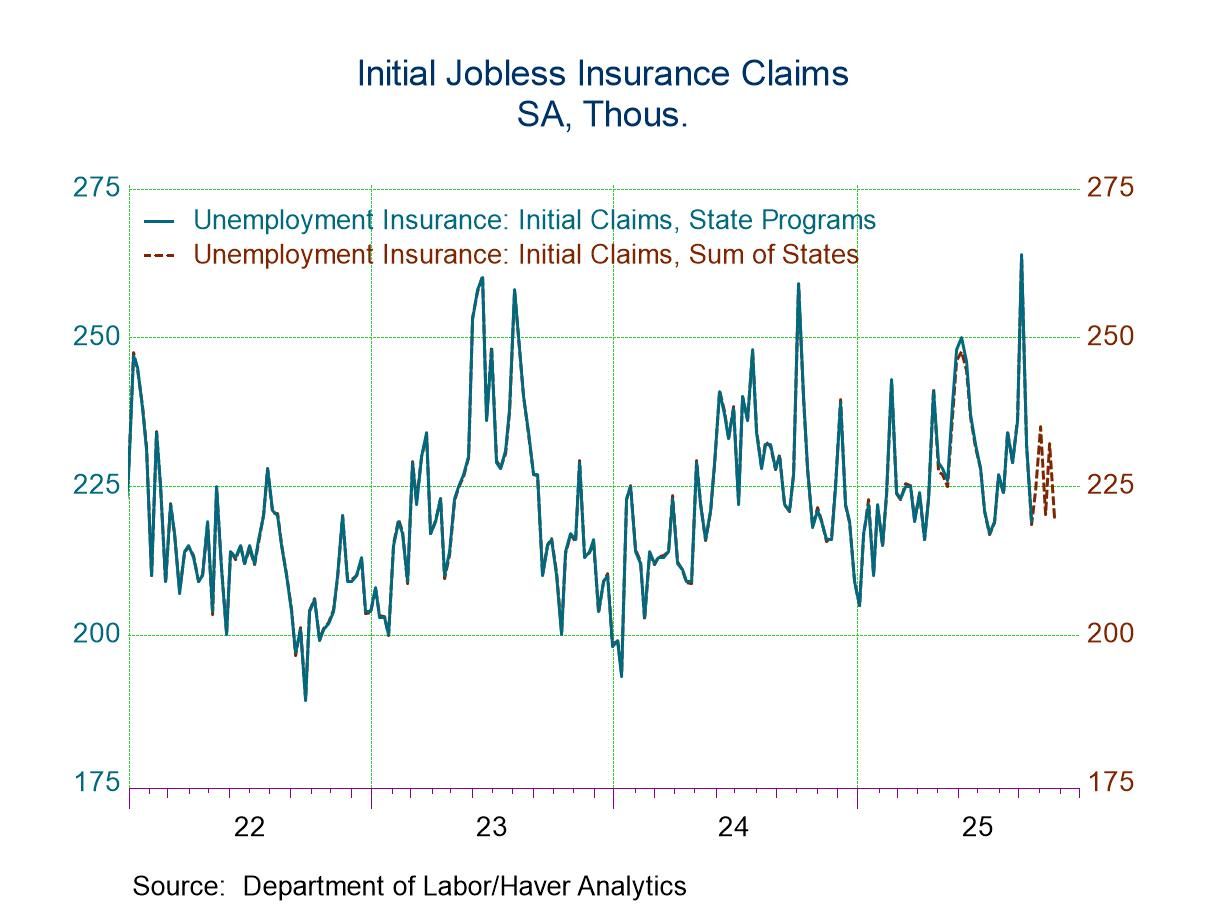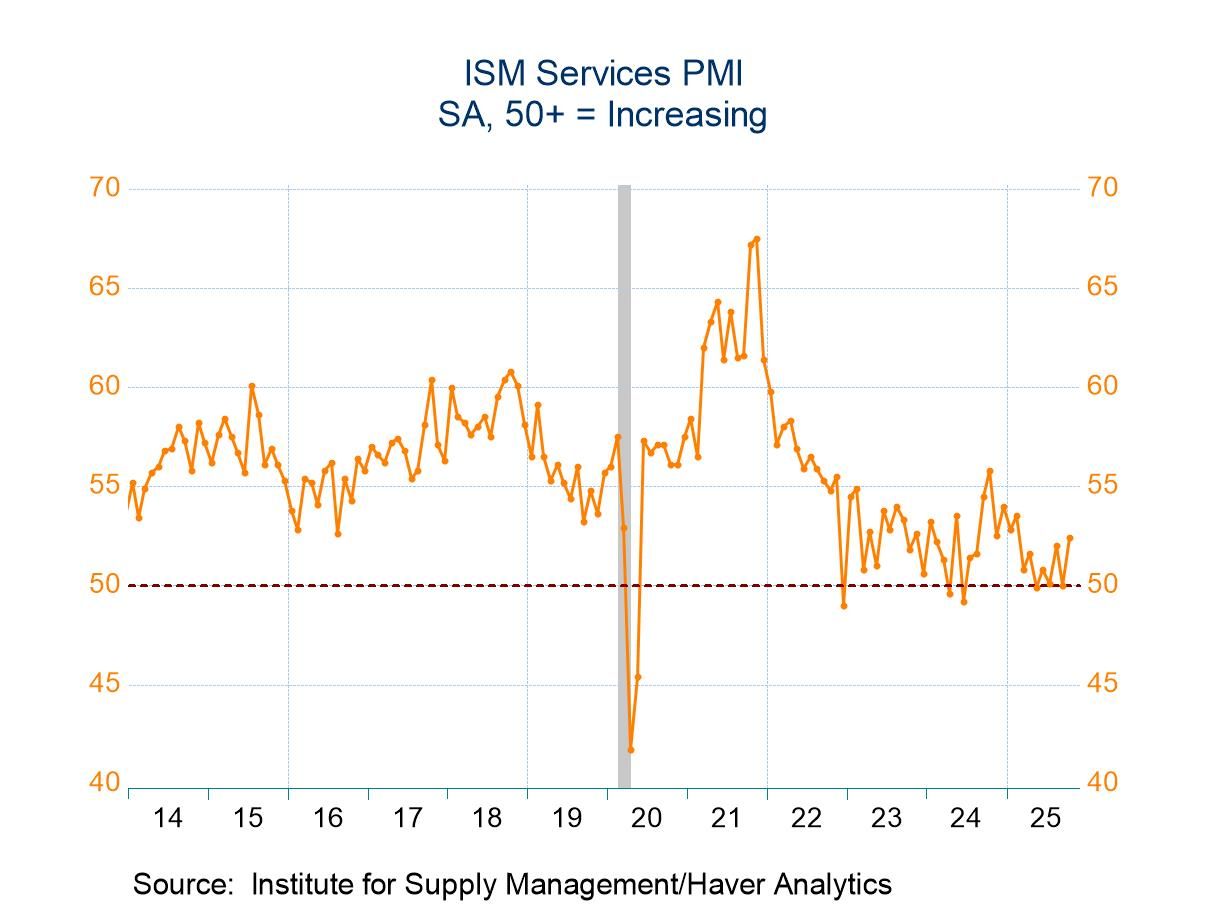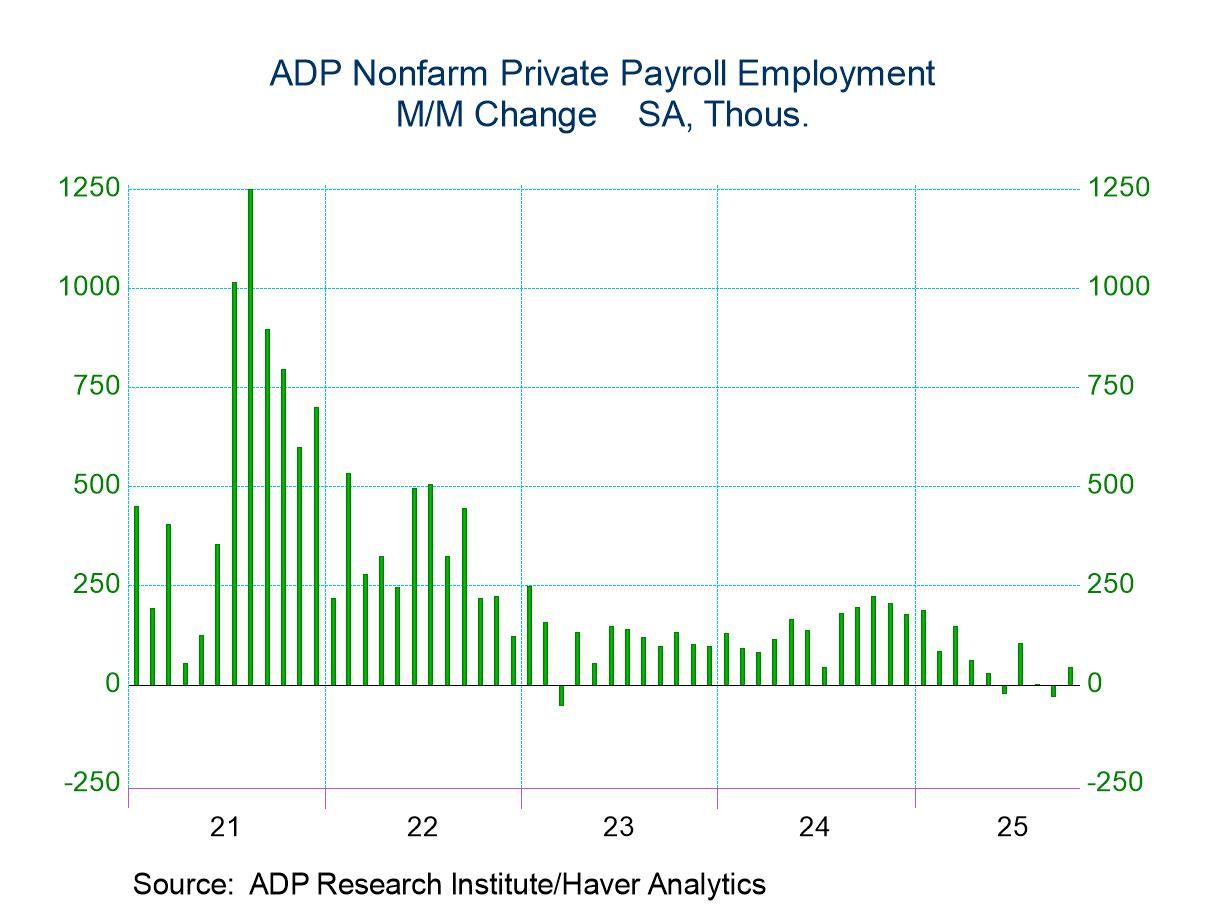 Global| Dec 16 2019
Global| Dec 16 2019Empire State Manufacturing Activity Improves Slightly; Prices Weaken
by:Tom Moeller
|in:Economy in Brief
Summary
Factory sector activity in New York remains tepid. The Empire State Manufacturing Index of General Business Conditions rose slightly to 3.5 in December from November's 2.9. The index has been fairly steady since June. An increase to [...]
Factory sector activity in New York remains tepid. The Empire State Manufacturing Index of General Business Conditions rose slightly to 3.5 in December from November's 2.9. The index has been fairly steady since June. An increase to 3.8 had been expected by the Action Economics Forecast Survey. During all of this year, the index indicated moderation in activity with a decline to 4.9 from 19.8 in 2018. Twenty-eight percent of respondents reported that conditions had improved in December while 25% reported a worsening. The Empire State data, reported by the Federal Reserve Bank of New York, reflect business conditions in New York state, northern New Jersey and southern Connecticut.
Haver Analytics calculates a seasonally adjusted index that is comparable to the headline ISM index The ISM-adjusted index improved slightly to 52.1 in December from 51.3 in November, above the recent low of 48.4 in June. A reading of 50 or greater indicates expansion in business activity. During the past 15 years, there has been a 64% correlation between the index level (which measures change) and the quarter-to-quarter percent change in real GDP.
The component series in the Empire State survey demonstrated variable performance this month. The shipments and inventories indexes improved while new and unfilled orders deteriorated. The delivery times reading was little changed.
Labor market conditions in December were mixed. Employment continued to expand at a rate well above the deterioration shown from June through August. Twenty-one percent of respondents indicated improved hiring while 11% reported deterioration. The average workweek deteriorated, however, to the weakest level since August.
The prices paid index fell to 15.2 in December, it's lowest level since March 2016. A greatly lessened 20% of respondent reported paying higher prices while a steady four percent paid less. The prices received index declined to 4.3 this month, also the lowest level since 2016.
The series measuring expectations for business conditions in six months improved greatly to 29.8 in December, its highest level since July. Expected new orders, shipments and delivery surged but hiring intentions held steady. The capital expenditures index continued the sharp improvement demonstrated in November.
The Empire State figures are diffusion indexes, which are calculated by subtracting the percentage of respondents reporting declines from the percentage reporting gains. Their values range from -100 to +100. The data are available in Haver's SURVEYS database. The ISM-adjusted headline index dates back to 2001. The Action Economics Forecasts can be found in Haver's AS1REPNA database.
| Empire State Manufacturing Survey | Dec | Nov | Oct | Dec'18 | 2019 | 2018 | 2017 |
|---|---|---|---|---|---|---|---|
| General Business Conditions (Diffusion Index, %, SA) | 3.5 | 2.9 | 4.0 | 11 5 | 4.8 | 19.8 | 16.1 |
| General Business Conditions Index (ISM Adjusted, >50=Increasing Activity, SA) | 52.1 | 51.3 | 52.1 | 56.2 | 51.8 | 56.4 | 54.6 |
| New Orders | 2.6 | 5.5 | 3.5 | 13.4 | 3.3 | 16.5 | 14.5 |
| Shipments | 11.9 | 8.8 | 13.0 | 20.3 | 10.6 | 20.4 | 15.9 |
| Unfilled Orders | -13.8 | -8.2 | -12.5 | -5.1 | -6.0 | 3.5 | 1.9 |
| Delivery Time | -5.8 | -5.5 | -2.5 | 3.2 | -0.1 | 9.1 | 6.1 |
| Inventories | 2.2 | -6.2 | -0.6 | 7.1 | -0.9 | 5.9 | 1.5 |
| Number of Employees | 10.4 | 10.4 | 7.6 | 17.5 | 5.4 | 12.4 | 8.1 |
| Average Employee Workweek | 0.8 | 2.3 | 8.3 | 6.7 | 2.3 | 7.8 | 4.6 |
| Prices Paid | 15.2 | 20.5 | 23.1 | 39.7 | 26.3 | 45.8 | 29.0 |
| Prices Received | 4.3 | 6.2 | 6.3 | 12.8 | 10.3 | 19.3 | 11.0 |
| Expectations 6 Months Ahead | 29.8 | 19.4 | 17.1 | 30.6 | 23.7 | 35.2 | 42.7 |
Tom Moeller
AuthorMore in Author Profile »Prior to joining Haver Analytics in 2000, Mr. Moeller worked as the Economist at Chancellor Capital Management from 1985 to 1999. There, he developed comprehensive economic forecasts and interpreted economic data for equity and fixed income portfolio managers. Also at Chancellor, Mr. Moeller worked as an equity analyst and was responsible for researching and rating companies in the economically sensitive automobile and housing industries for investment in Chancellor’s equity portfolio. Prior to joining Chancellor, Mr. Moeller was an Economist at Citibank from 1979 to 1984. He also analyzed pricing behavior in the metals industry for the Council on Wage and Price Stability in Washington, D.C. In 1999, Mr. Moeller received the award for most accurate forecast from the Forecasters' Club of New York. From 1990 to 1992 he was President of the New York Association for Business Economists. Mr. Moeller earned an M.B.A. in Finance from Fordham University, where he graduated in 1987. He holds a Bachelor of Arts in Economics from George Washington University.


